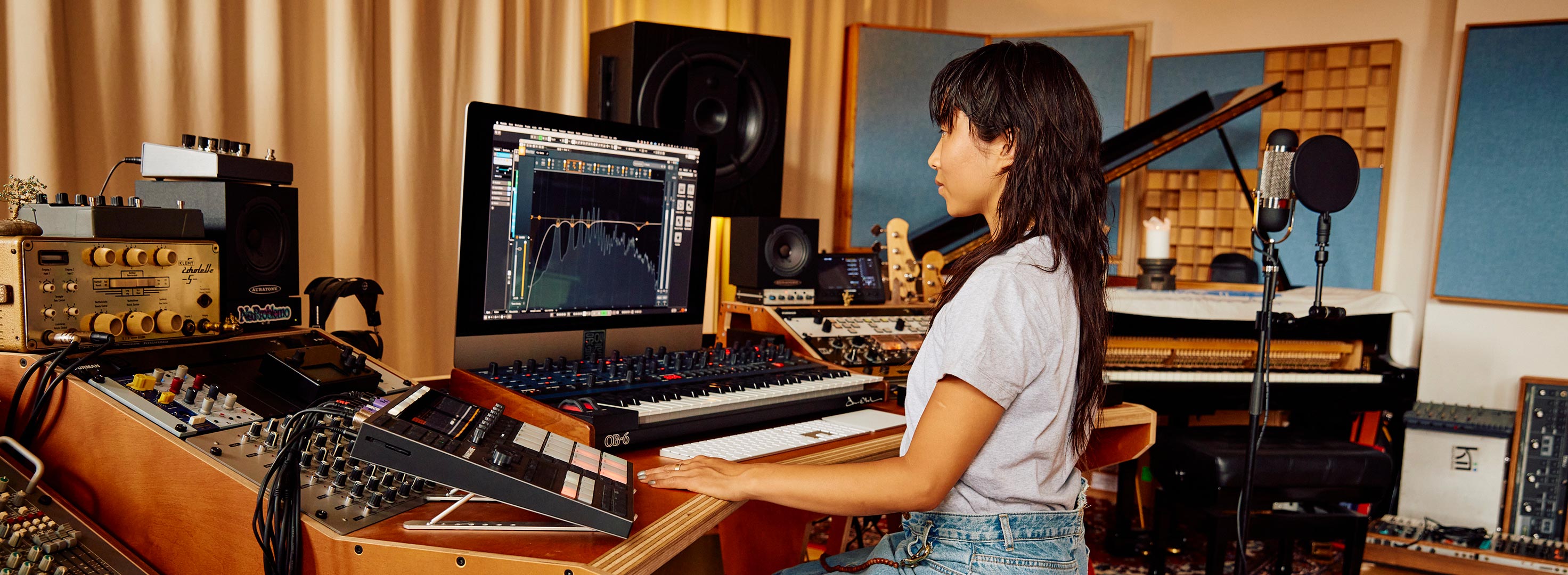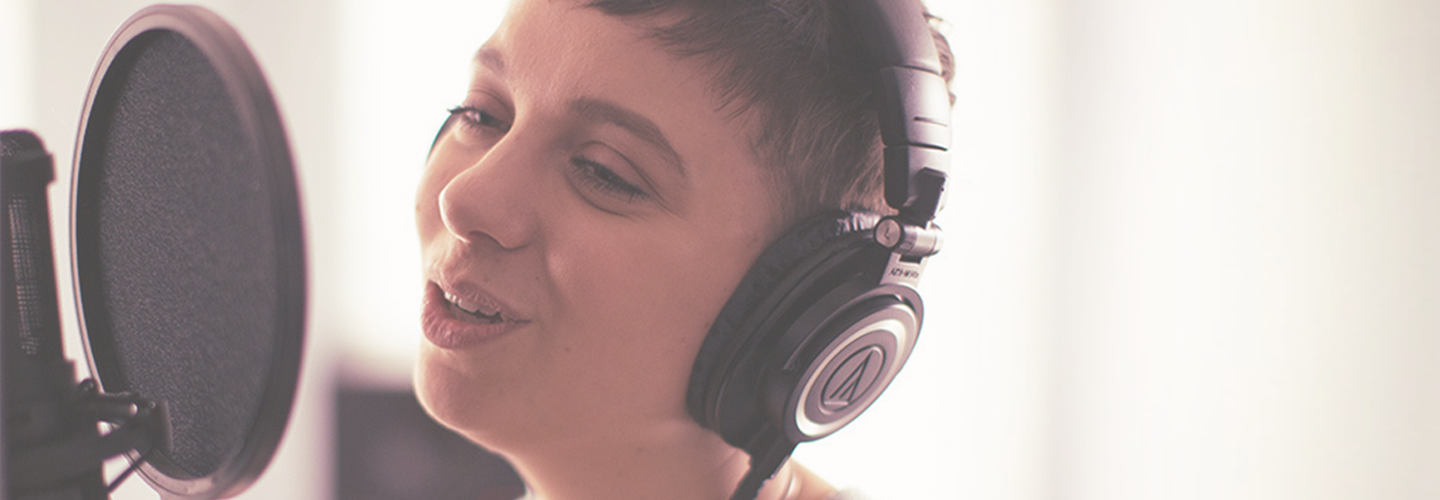
How to EQ a Pop Vocal
Learn how to EQ a pop vocal using Nectar Pro. With just a few adjustments, you can EQ pop vocals so they shine through crisp, clean, and clear in any mix.
Pop vocals tend to have the same sort of sound when they hit our ears. People use words like bright, shiny, crisp, and airy to describe them, and you can hear this sound on loads of tracks at the top of charts across genres. Let’s take a look at how to achieve that same sound and make a vocal POP right out of your mix. In this article, we’ll talk about how to EQ a pop vocal to set yourself up for success later in mixing music.
In this piece you’ll learn how to:
- Eliminate unnecessary lows
- Add brightness to a vocal that transcends any mix
- Remove unwanted vocal resonance
- Boost warmth and presence in a vocal
I’ll be using one of my own vocal samples so you can hear the changes the EQ is making as we go along. Here is the raw vocal we’ll be working with:
And here’s the final vocal with EQ:
To demonstrate the process, I’ll be using the EQ module in Nectar Pro.


Nectar Pro
You can follow along and EQ your vocals with the plug-ins in this tutorial that are included in a free trial of iZotope’s


iZotope Music Production Suite Pro: Monthly
Eliminate unnecessary lows with a high pass filter
In order to get that airy, light sound, the first step is to eliminate unnecessary activity in the very low end. Using a high pass filter with a high Q or slope, filter out everything below around 100 Hz for a male vocal, or 150 Hz for a female vocal. These are not hard rules, just guidelines to get you started. Just make sure you’re not cutting above the fundamental frequency of any note, and that you still give the lowest note some room to breathe.

A high-pass filter cutting out rumble, noise, and proximity
In a vocal, these low frequencies are usually mostly ambient room noise, electronic hum, and the sound of the singer’s proximity to the mic on plosives ("p" and "b" sounds), which will even happen if you use a pop filter. You likely won’t miss the sound of those unnecessary low frequencies or even hear a huge shift, but this lightens things up and removes unnecessary energy from the vocal.
This unnecessary energy can also cause issues later on in the effects chain. If we kept this low end content in the vocal and ran it into a compressor, the signal would cross the threshold at a lower level than it would without this low end. The compressor would therefore be reacting to audio content that we don’t actually want in the final vocal, and not compressing the vocal like we’d want it to.
Cutting this extreme low end isn’t something that’s specific to vocals. Eliminating unwanted noise and energy is applicable for virtually any kind of mix element.
Add brightness with a high-shelf filter
The next step is to brighten the high end with a high shelf filter. Everyone’s voice has a different amount of brightness and you’ll have to make an informed decision about what’s right for the vocal you’re working on. People who have airy, breathy vocals might not need much of a boost at all, while others with a rounder, darker tone might require a significant boost.

Boosting the highs to get that shimmer and shine
Halsey, Ellie Goulding, and Ariana Grande all have voices with a lot of breath, whereas Celine Dion, Lady Gaga, and James Blake have more pure tone and body in their voices. Knowing where to set this high shelf is the real trick, but here’s a tip to get you on the right track:
It’s often easier to hear that something sounds wrong than to see that it’s wrong on an EQ. To make sure a guitar is in tune—without a tuner—we first pull it out of tune and then bring it back towards the pitch center. You can do the same thing with this high shelf band, boosting it until the vocal becomes too bright, and then pulling it back until you start to miss that brightness. Then you know you’re close to where you need to be.
Here is my vocal after removing the unnecessary low frequencies and boosting the brightness:
Remove resonance with bell filters
A pop vocal needs to be especially smooth, with any resonances being controlled or turned down. This isn’t true for all vocals; a jazz vocal often has more nuance and resonance than a pop vocal to stay more “natural” sounding, and sometimes to emulate traditional instruments like horns. Pop, on the other hand, is defined more by its brightness than its mid range. To achieve that balance, you need to identify and attenuate resonant frequencies in the vocal.
Resonant frequencies are points and ranges in the voice where there’s an abundance of energy. We would use words like "nasal," "metallic," and "brassy" to describe them. Each voice has a different amount of resonance in different areas of the frequency spectrum. Resonances can also depend greatly on which microphone is used, the range of the song relative to the person that’s singing it, the time of day, the specific performance, and plenty of other factors.
In order to eliminate resonances, you can use a technique called ‘peak and sweep.’ To do this, create a wide bell filter with a Q factor of around 1, boost it by arout 5dB, and sweep it across the frequency spectrum to find any resonant frequencies. This boost will act as a magnifying glass you can use to identify resonance you can remove from your vocal. If you spot resonance, hone in on it by increasing the Q factor, which narrows the bell filter, and attenuate at that specific frequency.
If you’re using Nectar Pro, the EQ module includes an Alt-Solo feature that makes this process even easier. It allows you to play back frequency bands in isolation and automatically assigns an EQ node in the areas you want to attenuate.
Once you’ve identified where the resonance is and how wide the range is, you can then lower the EQ band below the 0 dB line and widen it accordingly. How much you cut will depend on the amount of resonance present in your vocal. Here’s where I placed my bell filters to clean up my vocal:

Two bell filters removing unwanted resonance
Nectar Pro also has a nifty feature called Follow EQ that locks onto a harmonic in a signal (like these resonant frequencies) and follows it as the harmonic moves around. Since a pop vocal generally moves up and down in pitch throughout the performance, this Follow EQ function is very useful for removing an area of resonance in the vocalist’s voice as it moves up and down the frequency spectrum. I’ve turned on Follow EQ for my bell filters, and this is the result:
Boost presence and warmth with bell filters
The last piece of EQing a pop vocal, and the hardest to pull off, is to boost the ranges in a vocal that create more presence and warmth. Again, this will differ for each voice you encounter, but here are a few general tips to get you going:
- These areas tend to be in the mid range, between 1–6 kHz.
- If a vocal is feeling thin, a boost between 200–300 Hz can work well.
- Be careful boosting around 4–9 kHz since that’s where sibilance tends to hide out. Boosting too much here can cause your vocal to sound harsh.
Knowing where to boost is a lot more difficult than knowing where to cut, and requires more refined critical listening skills. The more vocals you mix, the easier this will become.
Nectar Pro comes with two separate EQ modules. I typically like to use the first EQ for cutting and the second for boosting. For my vocal, I decided to add a boost around 430 Hz to add some more body to my voice and another boost around 3.5 kHz to bring out a bit more sizzle and crispness.

Bell filters boosting presence and warmth in Nectar Pro
Here’s what my final vocal sounds like after a bit of EQ boosting:
Start using EQ on your pop vocals
A little bit of EQ work really goes a long way. Here’s the before-and-after audio sample to show you how much good the EQing did for my vocal:
With just a few simple EQ adjustments, you can easily polish up your pop vocal and get it ready for the next steps in your vocal chain. After EQing, you’ll probably want to add some compression, de-essing, and maybe a bit of reverb to finish up your vocal processing. But, you can do all of this within the same instance of Nectar Pro, which is one of the many plug-ins that come with a free trial of iZotope’s


iZotope Music Production Suite Pro: Monthly


